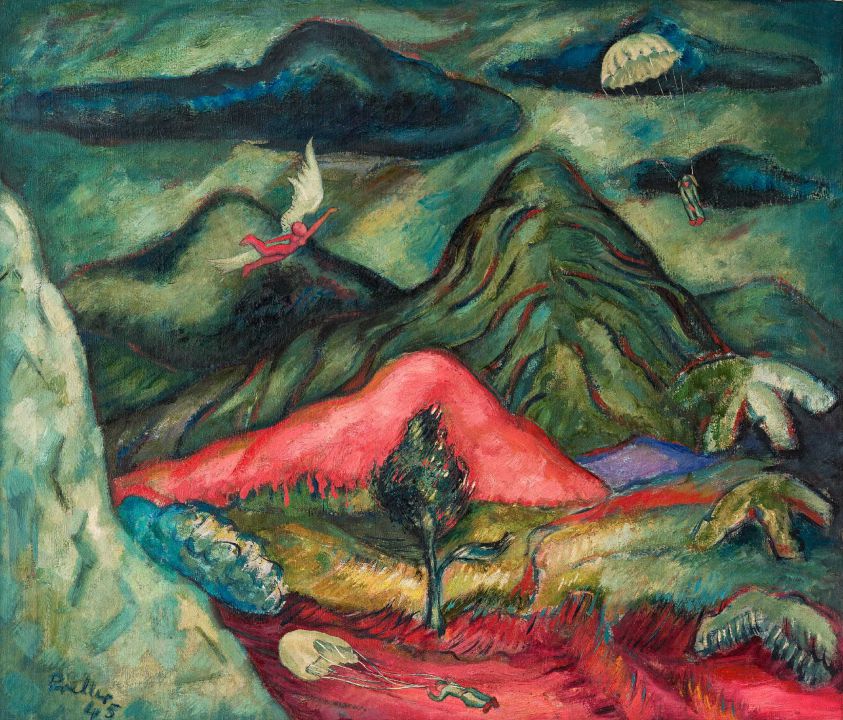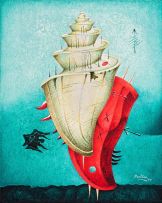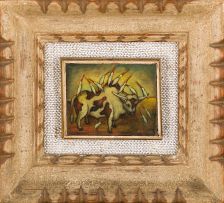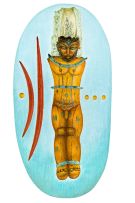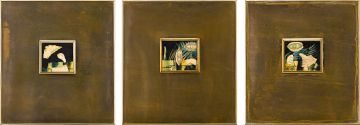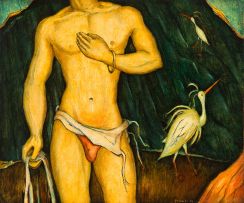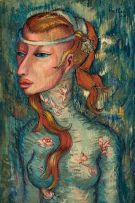Important South African and International Art
Live Auction, 7 November 2016
Evening Sale
Incl. Buyer's Premium & VAT
About this Item
signed and dated 45
Notes
Preller was taken prisoner in June 1942 when Tobruk fell to Rommel's forces. After stints in Prisoner of War camps in Libya and Italy, he returned to Pretoria in August 1943, and was demobilized that October. The North African Campaign had left a telling mark, and despite having witnessed moments of compassion throughout, the inhumanity and violence had still scarred him. No surprise then that images from his service, whether of loneliness, divinity, mutilation, or optimism, pervaded the group of pictures in the years after his homecoming. Revelation was painted in 1945, and exhibited in the August and September that year at the Gainsborough Gallery in Johannesburg. It showed the kind of leafy, jungle landscape he had seen in the Belgian Congo in 1939 - painted thickly with viridian, dark olive and midnight blue - but above which a paratrooper, slack-shouldered and lifeless, drifted downward. A fellow soldier lay waiting, likely dead, in a lava-pink clearing, reminiscent of the erupting Nyiragongo volcano the artist had witnessed at Lake Kivu, and which left a life-long impression of both beauty and terror. Revelation would be utterly hellish but for the winged angel floating between the two mountain peaks; she suggested the 'paradox of beauty in the midst of horror' that Preller continued to explore in his post-War canvases.1 In the opinions of Karel Nel and Esmé Berman, the picture always 'had a meditative, almost mystical quality, for which precision of draftsmanship was entirely secondary to overall mood'.2
1 Esmé Berman and Karel Nel. (2009) Alexis Preller: Africa, the Sun and Shadows, Johannesburg: Shelf Publishing. Page 87.
2 Ibid.
Literature
Esmé Berman and Karel Nel. (2009) Alexis Preller: Africa, the Sun and Shadows, Johannesburg: Shelf Publishing. Illustrated in black and white on page 87.
